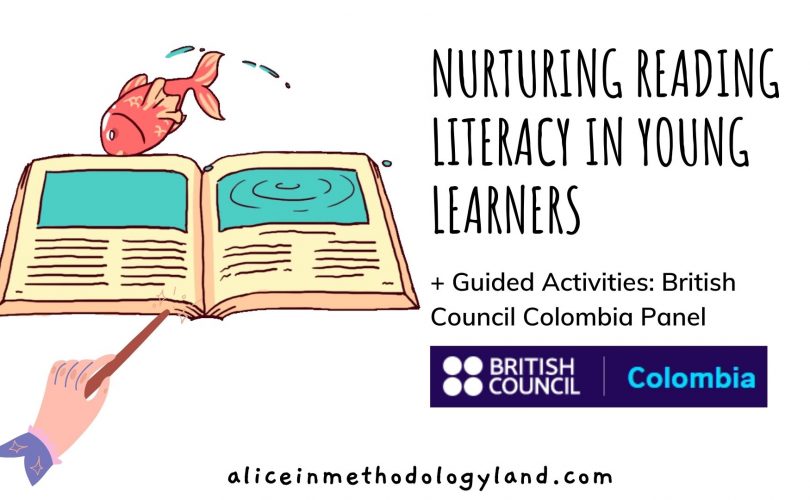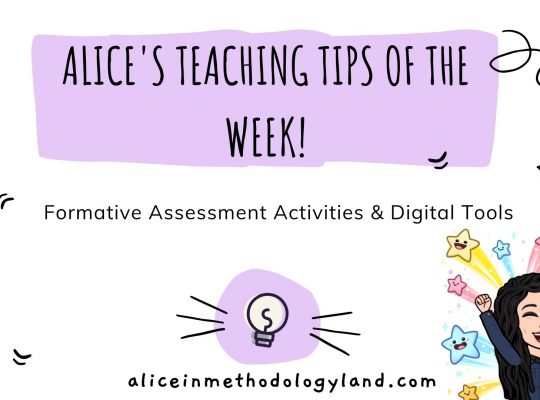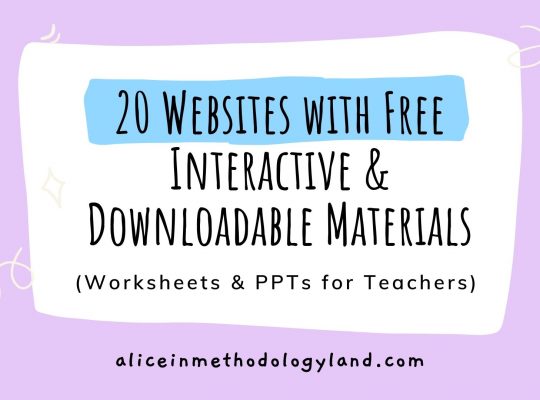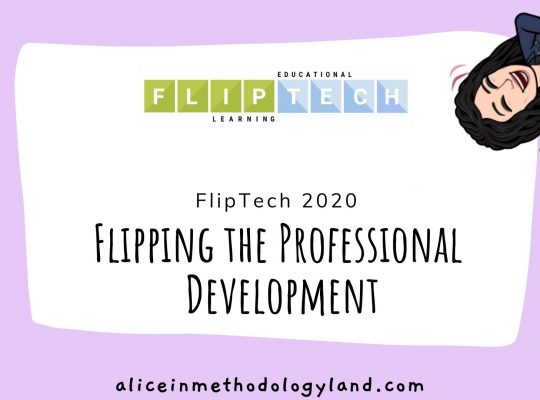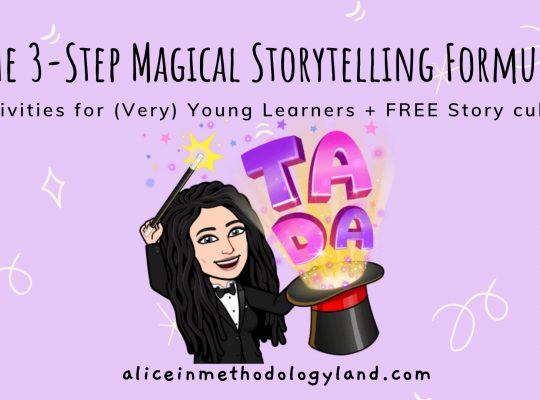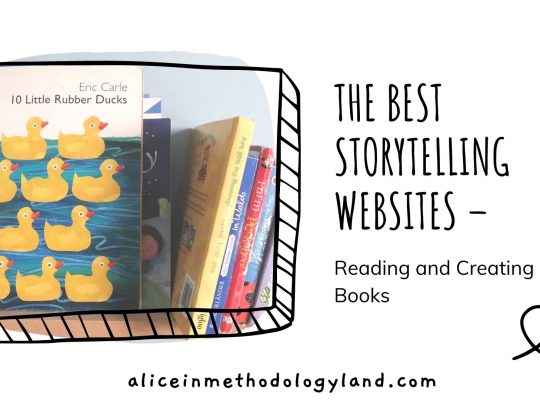Hello, my dear colleagues, and welcome to this article related to reading activities for young learners!
This semi-academic essay will have a difficult task to discuss and disseminate literacy development in young learners. Therefore, in this article, I will discuss various approaches and share many activities and my teaching philosophy regarding literacy instruction.
I will discuss the balanced approach, CLIL, and storytelling with a sprinkle of sociocultural learning and EdTech.
Building a foundation for literacy development
According to Shin and Crandall (2014), when we develop literacy activities, we have to consider the following things:
- Has the child learned to read and write in his/her own language?
- Is the child just beginning to learn to read in his/her own language?
- Is that language written in the Roman alphabet, another alphabet, or characters?
These aspects of literacy instruction completely change the way literacy is taught.
To be able to read, a child has to:
- Understand the alphabet;
- Decode;
- Develop sight vocabulary to read fluently (with automaticity);
- Develop strategies to help with comprehension and fluency;
- Read texts that match her/his interests and reading level;
- Engage in extensive reading (independent reading of a variety of reading materials).
What is the balanced approach?
The balanced approach in literacy is based on joint skills acquisition. Young learners need to learn writing and reading at the same time since those skills are complementary. By connecting those two skills, we can achieve both the input and output of language simultaneously.
This approach is also my personal literacy instruction philosophy, and I have never taught those skills separately. Instead, I usually start with storytelling, which is connected to the read-aloud method.
What is sociocultural approach to reading and how can it raise interest in reading in young learners?
When considering theories of learning, we should also consider sociocultural perspectives and the role that culture, interaction, and collaboration have on quality learning. Modern social learning theories stem from the work of Russian psychologist Vygotsky, who produced his ideas between 1924 and 1934 as a reaction to existing conflicting approaches in psychology (Kozulin, 1990). Vygotsky’s ideas are most recognized for identifying the role social interactions and culture play in the development of higher-order thinking skills, and it is especially valuable for the insights it provides about the dynamic “interdependence between individual and social processes in the construction of knowledge” (John-Steiner & Mahn, 1996, p. 192).
Socio-cultural perspective of learning
What does all of this have to do with literacy?
As we all know, children’s backgrounds can impact the way they learn and their background knowledge. By acknowledging those differences, we can encourage every child to share their knowledge and make them feel like they matter. Their families matter, their cultures matter, and everything they do without even thinking daily can be surprising to another child.
The sociocultural approach to literacy practically means introducing books with characters from different cultures, races, unusual families, habitats, and all kinds of personalities. By identifying with a character from a book, my children are drawn to literature naturally, and I noticed that many of them developed intrinsic motivation when it comes to reading.
Also, one size does not fit all is my main motto while doing storytelling with young learners. Multiculturalism and the differentiation in materials and activities are the keys to motivating young learners to read.
Last year I started building my foreign languages library, and so far, I have books from Sweden, Greece, Germany, Serbia, and the UK. I am expanding it and including books from many countries because I believe that storytelling with picture books is so powerful that the language barrier does not matter at all.
I have built an interactive online library in Genial.ly, where I added all my books. The children select the book we will cover next time, and they are always eager to learn. Explore my interactive library below.
Teaching reading with technology can be really fruitful, but the aspects we should focus on more are the use of tools and the activities, not so much on the materials themselves. Also, using technologies in reading activities is usually more suited for learners aged 10+, which means it works more effectively with more advanced young learners and teenagers.
Activity 1: Edmodo or Class Dojo


Social media-based bite-sized reading + communication via posts and comments – Communicating on Edmodo, Class Dojo, or other social-media-based LMS is always interesting to young and teenage learners. Make sure the questions you post are short, and the reading materials are engaging and relevant to the things happening around the world. Explore one of my reading/writing tasks on Edmodo done with teenage learners. You can easily create a more simplified version for young learners.


Activity 2: Insert Learning annotation
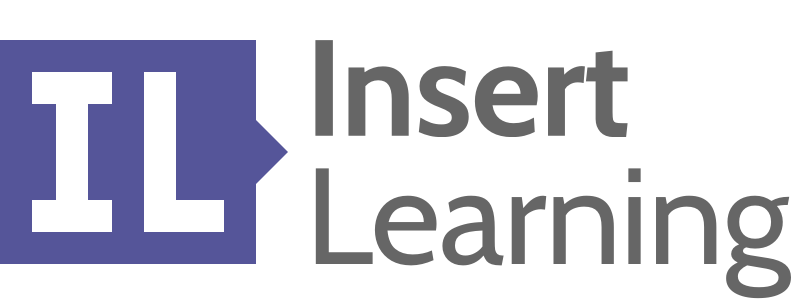
Annotation of authentic articles to get them closer to the target group. Annotation tools are more suitable for more advanced young learners or teenage learners. I usually use InsertLearning for interactive annotation.
- Insert instructional content on any web page.
- Differentiate for Every Student – Easily scaffold text with questions and media that help all of your students be more successful learners.
- Authentic Sources to Build Lifelong Learners – Utilize primary sources and supplement current curriculum with high interest content that your students can connect with.
- All Students Have A Voice – Embedded discussions help all student share their ideas while reading. Students can annotate any web page and share what they think is important.
- Real-Time Assessment and Intervention – Monitor student responses and annotations during class. In a blended or flipped classroom, you can respond when students need help the most.
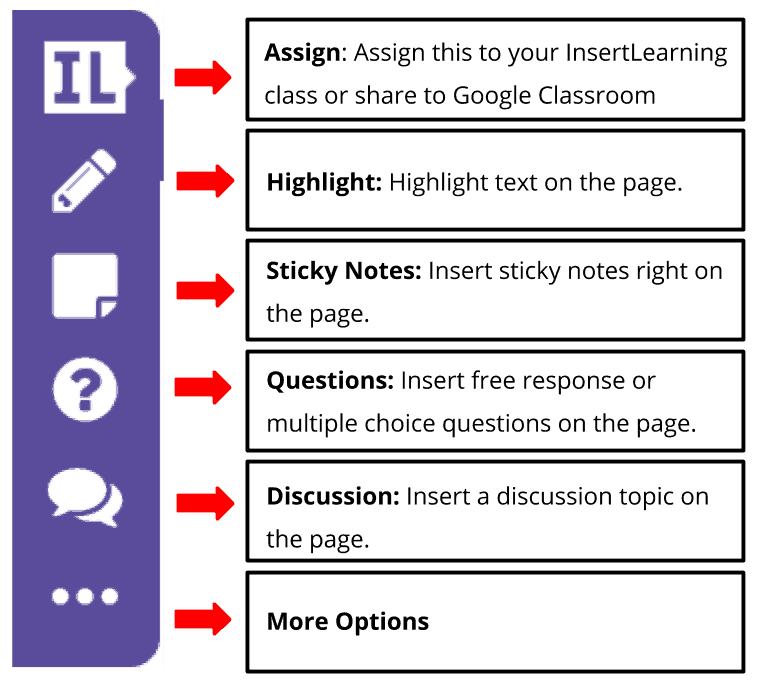
- Engage All Readers – Keep students engaged and active learners with interactive questions, discussions, videos, live annotations, and a collection of tools you can embed in lessons.
Activity 3: Genial.ly
Since I am a techie teacher, I’ve also started adapting my storytelling materials for young learners and made a digital version in Genial.ly. The material below is developed so that the children can use it independently, without the help of their parents. The material has both pre-teaching activities and post-reading activities. Along with the practice material, the learners can watch a storytelling video if they cannot read the picture book by themselves.

Storytelling and ICT with Young Learners – Preschool in the Cloud™
Can we improve proficiency levels through reading instruction? If so, how?
I believe that proficiency levels can be improved through reading instruction, but only if it is combined with at least one other language skill (either listening, speaking, or writing).
Activity 4:
Separate young learners into groups. Let them select their topic of interest. Have each of them write 1 paragraph and combine it into a story/article. Shuffle the stories among groups and complete various reading comprehension activities, from comprehension questions to summarizing. These kinds of combined activities can improve reading and writing skills, which ultimately improves overall proficiency in learners.
How can we teach reading in multi-level groups?
Teaching reading in multi-level groups for me works best by doing a lot of storytelling. So I always do storytelling in multi-level groups, and some learners serve as mentors and assistants, while the very young learners usually look up to them and want to take their place someday.
Activity 5:
After completing a lot of preparation activities, you can continue to dramatize. Then, you can transfer the book to the student at a certain point, who will continue to read to the rest of the class.
Make sure to create a positive environment – for students to switch from listening to reading activities, they have to feel completely safe and relaxed. So offer a lot of encouragement, rewards in terms of stickers, diplomas, and more. Watch the video below to see how we switch from read-aloud to independent reading in front of the multilevel group.
How can we improve reading skills and motivate students to read without focusing too much on unknown vocabulary they find?
Since young learners cannot memorize more than five new words per day, select only the words from the reading materials you think can be used immediately in conversation.
Use it or lose it should be your main motto.
The best thing to do with young learners is to use picture books. You can copy them so that everyone has a copy. Picture books are helpful in a young learner’s classroom because illustrations are usually self-explanatory. With a little reading, the learners can follow the story and be proud of themselves because they understood what happened.
You can simplify the whole process of introducing new words to students by using CLIL (Content Language Integrated Learning) as your instructional method. Consult with other teachers, explore what they are learning at the moment, and cover the topics from other subjects in English. That way, the learners will be familiar with the concepts, so it is much easier to remember more words than usual. Watch the short video below to learn more about CLIL.
What are some approaches for teaching reading and writing to young learners?
The three main approaches to teaching reading are the phonics approach, the whole language approach, and the language experience approach. The phonics approach focuses on using bottom-up language processing, while the whole language approach and the language experience approach rely on top-down processing.
Explore my academic essay below for more information about these approaches.
TEYL – Teaching Reading and Writing to Young Learners
How can we introduce reading instruction to young learners (6-12 years old) and what kind of activities do you suggest?
Before we even start with the reading activities, we need to teach phonics. Teaching phonics can be daunting for teachers who are not native speakers since they never experienced learning phonics in English.
Follow the phonics activities given in the textbooks, or search for a textbook based on phonics, like Oxford Phonics. Phonics instruction is essential, and it is crucial to introduce phonics properly because this will impact the overall literacy.
The following activities come from Shin and Crandall (2017), p. 179-181.
When I work on a storytelling lesson plan, I usually like to have a list of activities open, and then I use them to create more specific activities for the book we will cover next.
Activities for beginner readers:
- Pointing to or circling initial or final letters in words;
- Pointing to or circling words;
- Sorting pictures of objects (or the objects) with the same initial sound;
- Sorting and matching words that rhyme;
- Labeling pictures;
- Sorting and categorizing words by type of object or similarity of sound;
- Guessing a partially completed word (first and last letter, first letter);
- Completing a word or word and picture puzzle;
- Playing alphabet or word games;
- Noting patterns in songs or chants;
- Filling in a missing letter with a picture cue (e.g., c_a with a picture of a car);
- Creating words with letters;
- Posting words to a word wall;
- Creating letter collages.
Activities for more advanced readers:
- Unscrambling words (What animal words can you find here?)
- Filling in word puzzles;
- Choosing among multiple-choice items and pictures;
- Arranging words in proper sequence in sentences in a text (sentence strips);
- Matching texts with similar formats (schedules, lists, e-mails);
- Following along with a text while listening to it being read (on CD or by the teacher);
- Correcting mistakes in a text (while the teacher reads the correct version);
- Sorting true and false sentences;
- Skimming a text to get the main idea(s);
- Scanning a text for specific information;
- Answering comprehension questions about short texts;
- Looking up the meaning of unfamiliar words;
- Taking notes in a graphic organizer – sketchnote;
- Scanning a text for word chunks (bus stop, soccer ball);
- Jigsaw reading – each group should find a specific part of a text;
- Writing a reading response journal/article/letter.
Could reading in a foreign language improve reading in L1? Does literacy transfer happen from L2 to L1?
Reading in a foreign language can most certainly transfer the skills from L2 to L1. When you are a native speaker of any language (in my case, Serbian), comprehension of a reading text comes more naturally because you’ve listened to people speak. You decoded the language at a very young age, so a lot of things happen instinctively. Reading in the native language usually focuses on fluency, pronunciation, while the strategies for understanding the text are sometimes not explicitly taught.
The elementary reading skills even young learners can learn and transfer to L1 (when simplified) are skimming and scanning, and they can also be used in any subject. Finally, those skills can be beneficial throughout the whole education process.
To conclude: Storytelling is a magical a gateway to literacy with young learners
I’ve always considered storytelling and children’s literature the best way to teach all four language skills in the classroom. So this year, I designed a storytelling-based learning program that also included STEM and crafting. I started working with children from low-resource communities and minorities to empower them and bring free education in Klisa, a low-resource neighborhood in my city (Novi Sad). Here is my curriculum, along with four workshop feedbacks.
- Storytelling-based Learning as a Way to Promote Language Acquisition in Young Learners
- Storytelling Methodology for Young Learners: Activities & an Example Lesson Plan
- Wonderland Workshop 1 – Ice Breakers, Dr. Seuss – All About Me + Bounty (Storytelling-based Learning)
- Class Two at the Zoo by Julia Jarman, illustrated by Lynne Chapman – Storytelling workshop
- Dear Mother Goose by Michael Rosen & Nick Sharratt – Storytelling workshop
- The Mood Hoover by Paul Brown, Illustrated by Rowena Blyth – Storytelling workshop
Finally, buying books can be expensive. It took me years to build my library for young learners, and I still want to keep collecting books. To start, explore the link below with the best storytelling websites to read books and create interactive books with children for free.
Cannot invest in printed books for your classroom? Find thousands of titles online for free!

The Best Storytelling Websites – Reading and Creating Books
I imagine storytelling as a secret, magical gate to another world. When you immerse children in it, you can see them grow and become something new and different. Try to move away from textbooks and make the reading moments in your classroom exciting and mysterious. You will notice the literacy improvement almost instantly.
Pass through the magical storytelling door!

Watch the live panel
Watch the recording of the live panel below, and you can learn about a lot of interesting activities and the theory behind them.
You can read the answers to the questions my co-presenter, Rurik Tywoniw talked about on his website here.
References
- John-Steiner, V., & Mahn, H. (1996). Sociocultural approaches to learning and development: A Vygotskian framework. Educational Psychologist, 31(3/4), 191-206.
- Sociocultural perspective of learning, retrieved 14.11.2020.
- Shin, J. K. (2017). Literacy Instruction for Young EFL Learners: A Balanced Approach. National Geographic Learning.
- Shin, J. K. & Crandall, J. (2014). Teaching Young Learners English: From Theory to Practice. Boston: Heinle ELT, Cengage Learning.
- Rasinski, T. (2004). Creating fluent readers. Educational Leadership, 61(6), 46-51.

Click here to explore our materials corner where 99% of materials are forever free!
All the materials except lesson plans and 30+ page interactive activity books will be free FOREVER! Why? Because sharing is caring, and the past few years have not been kind to any of us. Please consider donating so we can keep making FREE materials for everyone.
Don’t forget to leave a review when you download materials! It’s just a minute of your time, and it means a lot to us.
P.S. The store and the freebie library are not the same things – the freebie library has some extra materials like conference presentations and webinar recordings which are not available in the store
The subscription link for the store is below the author’s bio in every post.
*Our articles may contain affiliate links, which is one of the ways we keep our organization functioning, and we might earn a small commission on links, at no cost to you.
